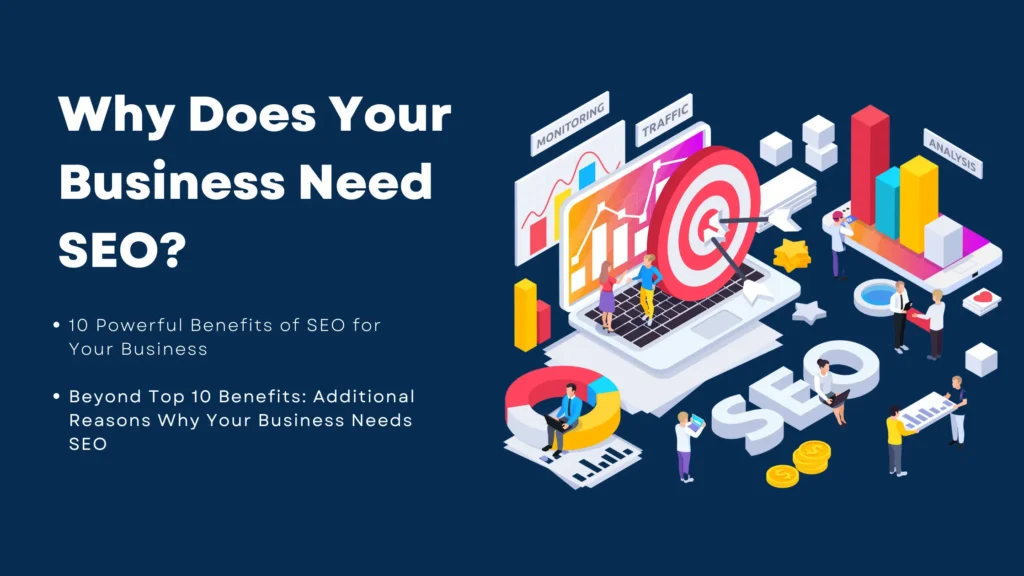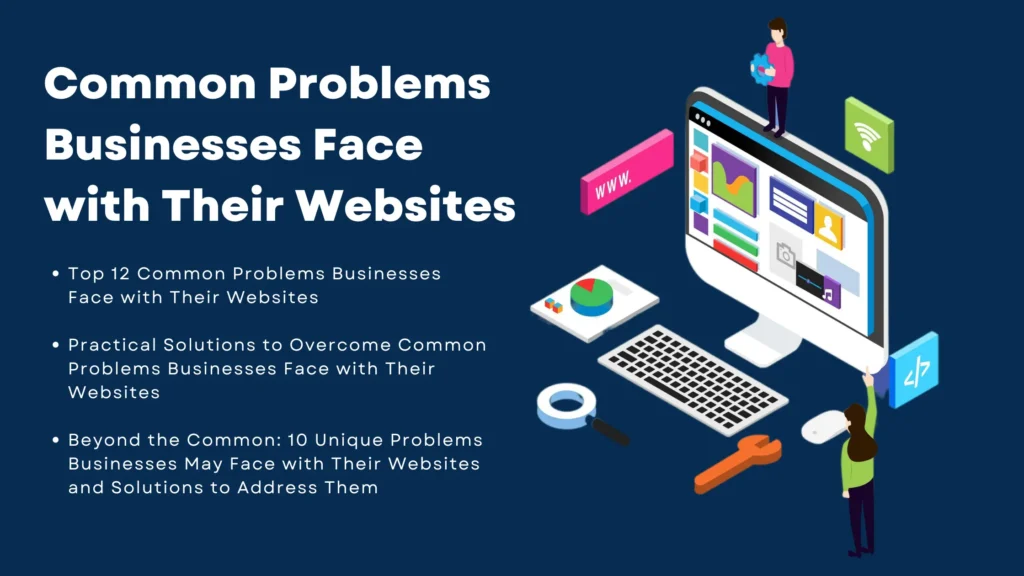10 Reasons Why Your Business Needs SEO
A well-executed SEO strategy can transform your online presence, drive long-term growth, and provide a substantial return on investment. From enhancing user experience to building trust with your audience, SEO {seo engine optimization} encompasses a range of techniques that can significantly benefit your business. This article explores the top ten reasons why your business needs SEO. We’ll explain in detail how SEO can help more people find your business online, and attract customers who are actively searching for your products or services. Additionally, we’ll discuss how SEO offers better value for your marketing budget, keeps you ahead of your competitors, and ensures your website is user-friendly and accessible. Let’s explore these compelling reasons in detail and uncover how investing in SEO Digital Marketing can bring benefits to your business. 10 Powerful Benefits of SEO for Your Business 1. More People Will Find Your Business Online SEO helps your website climb higher in the search engine results pages (SERPs) like Google for relevant keywords. This increased visibility means that when people search for products or services that your business offers, they are more likely to find your website. Higher rankings typically result in more clicks, as users tend to trust and visit the sites that appear on the first page of search results. This organic traffic can significantly boost your brand’s online presence and attract more potential customers to your site. Example: If you own a bakery and want to optimize your website for keywords like “best bakery in Pune,” this will help your website appear at the top of search results in Google. When someone searches for this term, they are more likely to find and visit your bakery’s website, increasing the chances of gaining new customers. 2. Bring in Customers Who Want What You Offer SEO targets specific keywords that potential customers use to find products or services similar to yours. By optimizing for these keywords, you attract visitors who are already interested in what you have to offer. This means the traffic coming to your site is more qualified and more likely to convert into sales or inquiries. This targeted approach ensures that your marketing efforts reach the right audience, increasing the efficiency of your online presence. Example: A pet store optimizing for “organic dog food” will attract visitors who are specifically looking for organic dog food. These visitors are more likely to make a purchase compared to someone randomly landing on the site, as they are actively searching for the exact product the store offers. 3. Build Trust with Potential Customers Websites that consistently appear at the top of search engines like Google are often recognized as more credible and trustworthy by users. High rankings signal to potential customers that your business is reputable and authoritative in its industry. This trust is important for converting visitors into customers, as people are more likely to engage with and purchase from businesses they trust. Over time, a strong SEO strategy can help build your brand’s reputation and credibility in the marketplace. Example: If your law firm frequently appears at the top of search results for “reliable divorce lawyer,” users will see your firm as a trusted source. This increased trust can lead to more inquiries and clients for your legal services. 4. Better Value for Your Marketing Money SEO is one of the most cost-effective marketing strategies because it targets users who are actively looking for your products or services online. Unlike traditional advertising methods that cast a wide net and hope to catch interested parties, SEO brings in traffic that is more likely to convert into sales. This targeted traffic results in a higher return on investment (ROI) since your marketing efforts are focused on attracting and converting interested customers rather than reaching a broad audience with varied interests. Example: Spending money on a billboard means paying to show your ad to everyone, regardless of their interest. In contrast, investing in SEO ensures that people searching for “buy laptop online” find your electronics store, leading to more qualified traffic and higher sales. 5. Stay Ahead of Your Competitors In competitive industries, having a strong SEO strategy can be the difference between gaining new customers and losing them to competitors. If your competitors are investing in SEO and you are not, they will likely outrank you in search engine results, capturing more potential customers. By staying on top of SEO trends and continuously optimizing your site, you can maintain and improve your rankings, ensuring that you remain competitive and visible to potential customers searching for your products or services. Example: Two Italian restaurants in the same city both have websites. The one with better SEO will appear higher in search results for “best Italian restaurant in Pune.” This restaurant will get more clicks, reservations, and ultimately, more business than the competitor with lower rankings. 6. Make Your Website Easy to Use SEO involves optimizing your website’s structure, content, and performance, making it easier for both search engines and users to navigate. A well-optimized site loads quickly, has clear navigation and provides a seamless user experience. This not only helps search engines index your site more effectively but also keeps visitors engaged and encourages them to explore more pages. A positive user experience is crucial for reducing bounce rates and increasing the time users spend on your site, which can lead to higher conversion rates. Example: An online store with a clean, well-organized site and fast load times makes it easy for visitors to find and purchase products. If someone visits your store to buy shoes, a user-friendly website helps them quickly find the shoes they want and complete their purchase, similar to the efficient shopping experience on Amazon. 7. Attract Local Customers Local SEO focuses on optimizing your website to attract customers in your geographic area. This is particularly important for businesses with physical locations or those that serve specific regions. Local SEO strategies include optimizing your site for local keywords, managing your online business listings, and encouraging
10 Reasons Why Your Business Needs SEO Read More »
Blog





